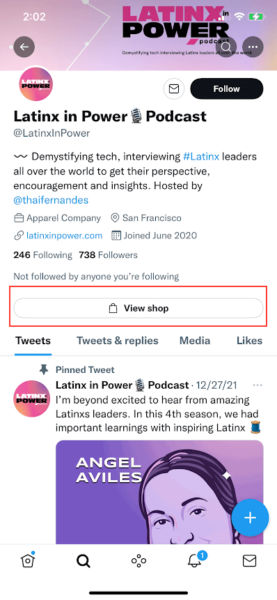
Google launches automated vehicle ads
Google will roll out vehicle ads to all U.S. advertisers beginning this month, the company announced Friday.

Vehicle ads will roll out to advertisers in more countries at an undisclosed “later date,” Google said in the announcement.
How vehicle ads work. Vehicle ads are designed to allow auto advertisers to promote their entire vehicle inventory to potential customers on Google.com. This format includes an image of the vehicle, make, model, price, miles, and the advertiser’s name (shown in the example above).
Google matches users with vehicle ads by using the details included in the advertiser’s vehicle inventory data feed (more on that below).
When a user clicks on a vehicle ad, they’re taken to the vehicle description page on the advertiser’s site. There, they can learn more and fill out a lead form. Advertisers can select which actions to measure, such as leads or store visits, and assign them a value.
Advertisers cannot use vehicle ads to promote vehicle parts, accessories, tires, or services.
How to get started. To use vehicle ads, advertisers must create a vehicle inventory data feed and connect it to Google Merchant Center. This feed includes data on makes, models, prices, mileage, and condition.

Since this is done through Google Merchant Center, advertisers can track metrics like clicks over a given time period.
Why we care. Car prices have remained high as a result of supply shortages associated with the pandemic and increased consumer demand. And, last year, 16% of new car buyers purchased their car online, up from just 1% three years prior, according to Google.
Source: Google launches automated vehicle ads
Russia-based advertisers can no longer reach global audiences on Google properties and networks
Google will pause ads on its properties and networks globally for advertisers based in Russia, the company announced Thursday. This means that advertisers based in Russia can not run Google ads targeting Russia-based users or anywhere else in the world.
Escalating ads suspensions. Google first began imposing ad suspensions on February 27. The initial round of suspensions was aimed at Russian state-owned media outlets. On March 3, the company expanded on the suspension by including all ads serving users in Russia.
Google is far from alone here. Numerous other platforms, including Microsoft Advertising, Apple, Facebook, Twitter, and Snapchat have announced similar policies in light of Russia’s actions in Ukraine. However, Google seems to be the first platform to take these actions a step further by hamstringing Russia-based advertisers from reaching global audiences.
Why we care. This cuts off an important channel for brands in Russia, hindering their ability to reach potential customers elsewhere in the world. If other platforms follow Google’s lead, Russia-based businesses may suffer as their audiences shrink.
From an industry standpoint, these suspensions are making it nearly impossible to use paid channels to get in front of Russian users. Unfortunately, we have no indication of how long the conflict (and thus, these suspensions) will last.
Source: Russia-based advertisers can no longer reach global audiences on Google properties and networks
Why on-site search should be a priority for marketers
“Content has become the primary tool that we use to create a dialogue with our prospects and to cultivate relationships with our customers online,” said Stephen Rahal, director of product marketing at Coveo, at SMX Next. “That content must be relevant and valuable. It also must be interactive to win their attention and draw them into a conversation.”

“Content has always been the best way to do marketing, and making your company the expert in your niche via content is the way to go,” he added.
Knowing what audiences want is key to creating high-quality content, and many marketers are looking for tools to help them with this process. Yet the overabundance of information in digital spaces can make it difficult to know what customers want from your organization — marketers need a solution that cuts through the noise and draws actionable customer insights.
“If SEO and SEM are getting people to your sites, how can you optimize that experience when they arrive?” Rahal asked. “How can you make sure that you’re not turning people off by failing to deliver the compelling search and navigation experience on your website?”
According to him, an on-site search fits the bill.
Source: Why on-site search should be a priority for marketers
Pinterest adds in-app checkout and personalized shopping recommendations
Pinterest is expanding on its shopping capabilities with in-app checkout and a new personalized recommendations feature, the company announced at its Pinterest Presents event on Thursday.
Pinterest Checkout. Currently, in beta, the ability to purchase items within the Pinterest app is now available for certain U.S.-based Shopify retailers. The platform expects to roll out this feature to more U.S.-based retailers over the course of this year.
Source: Pinterest adds in-app checkout and personalized shopping recommendations
Twitter Shops lets brands showcase 50 products
Twitter has introduced a new experimental eCommerce feature it calls Twitter Shops. Brands who want to create a shop can curate up to 50 items to include, which Twitter uses can then buy via an in-app browser from the merchant’s website.
After a brand or business enables a Twitter Shop, a new “View shop” button will appear on its profile page, directly above its tweets. It looks like this:

For now, only iPhone users can view and interact with the shops. This is much the same way the Twitter Shop Module was rolled out last year. That feature was more limited, allowing brands to show up to five products on their profile, in the same location as the Twitter Shops “View shop” button.
Twitter Shops are only available to select merchants and managed partners in the U.S., according to Twitter’s blog post. Twitter isn’t charging brands to open a Shop.
What Twitter says about Shops. “People are already talking about products on Twitter. We want Twitter Shops to be the home for merchants on Twitter where they can intentionally curate a catalog of products for their Twitter audience and build upon the product discussions already happening on our service by giving shoppers a point of action where a conversation can become a purchase.”
What it looks like. A Twitter Shop contains a product image, product name, product type, and price.
Source: Twitter Shops lets brands showcase 50 products
More news:
Help for Ukraine SEO & PPC specialists seeking work
Lookback: Google launched the Panda algorithm update 11 years ago